List of national drinks
A national drink is a distinct beverage that is strongly associated with a particular country, and can be part of their national identity and self-image. National drinks fall into two categories; alcoholic and nonalcoholic. An alcoholic national drink is sometimes a liquor drunk straight/neat (as in the case of whiskey in Ireland), but is most often a mixed drink (e.g., caipirinhas in Brazil) or beer or wine. A beverage can be considered a national drink for a variety of reasons:
- It is a common drink, made from a selection of locally available foodstuffs that can be prepared in a distinctive way, such as mango lassi that uses dahi, a traditional yogurt or fermented milk product, originating from the Indian subcontinent, usually prepared from cow's milk, and sometimes buffalo milk, or goat milk.[1]
- It contains a particular 'exotic' ingredient that is produced locally.
- It is served as a festive culinary tradition that forms part of a cultural heritage—for example eggnog in the US during the holiday period.
- It has been promoted as a national dish by the country itself.
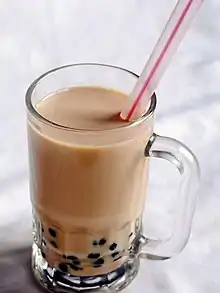
In some cases, it may be impossible to settle on a national drink for a particular country. In the realm of food at least, Zilkia Janer, a lecturer on Latin American culture at Hofstra University, says that it is impossible to choose a single national dish, even unofficially, for countries such as Mexico, China or India because of their diverse ethnic populations and cultures.[2] At the other end of the spectrum, sometimes different countries see the same beverage as their national drink (such as pisco sour in Peru and Chile).
The national drinks are categorized within geo-political regions modified from the United Nations' five "regional groups".[3]
Americas
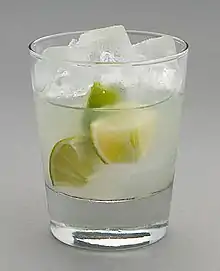
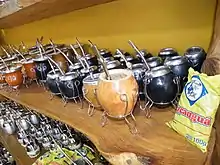
North America
.svg.png.webp) Canada: A Caesar is cocktail that originated in Calgary, and is widely drunk in all parts of Canada. Similar to a Bloody Mary it contains vodka, a blend of tomato juice, clam broth, hot sauce, and Worcestershire sauce, and is served with ice in a celery salt-rimmed glass, typically garnished with a stalk of celery and wedge of lime. What distinguishes the two is that only Caesar contains clam broth. Calgary officially celebrated an anniversary of its creation and launched a national petition for it to be recognized as the official cocktail of Canada.[4]
Canada: A Caesar is cocktail that originated in Calgary, and is widely drunk in all parts of Canada. Similar to a Bloody Mary it contains vodka, a blend of tomato juice, clam broth, hot sauce, and Worcestershire sauce, and is served with ice in a celery salt-rimmed glass, typically garnished with a stalk of celery and wedge of lime. What distinguishes the two is that only Caesar contains clam broth. Calgary officially celebrated an anniversary of its creation and launched a national petition for it to be recognized as the official cocktail of Canada.[4] United States: Coffee[5] was defiantly adopted as an alternative to British tea in the period leading up to the American Revolution. Coca-Cola[6] is America's iconic soft drink. Bourbon (whiskey),[7] named for Bourbon County, Kentucky, is a corn whiskey aged in charred oak barrels. It was proclaimed the U.S. National Spirit by an act of Congress in 1964.
United States: Coffee[5] was defiantly adopted as an alternative to British tea in the period leading up to the American Revolution. Coca-Cola[6] is America's iconic soft drink. Bourbon (whiskey),[7] named for Bourbon County, Kentucky, is a corn whiskey aged in charred oak barrels. It was proclaimed the U.S. National Spirit by an act of Congress in 1964. Mexico: Tequila is a liquor distilled from the blue agave plant, primarily in the area surrounding the city of Tequila, of the central western Mexican state of Jalisco. In 2018, the Mexican government approved a proposal to celebrate every third Saturday of March as the National Tequila Day.[8] Agua frescas are also quite popular, two notable ones being Jamaica and horchata.
Mexico: Tequila is a liquor distilled from the blue agave plant, primarily in the area surrounding the city of Tequila, of the central western Mexican state of Jalisco. In 2018, the Mexican government approved a proposal to celebrate every third Saturday of March as the National Tequila Day.[8] Agua frescas are also quite popular, two notable ones being Jamaica and horchata.
Central America and South America
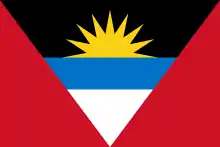 Antigua and Barbuda:
Antigua and Barbuda: Argentina: Mate is an infusion that is prepared by soaking dried yerba mate leaves in hot water and served with a metal straw and a hollow calabash. This is served and shared in the round, making it an integral part of society. Its origin is shared with Uruguay and Paraguay. Fernet con Cola is a cocktail that consists in Cola and Fernet on ice. It is usually prepared with Coca-Cola and Fernet Branca. The fernet with cola was created in the city of Córdoba and is an emblem of that province.
Argentina: Mate is an infusion that is prepared by soaking dried yerba mate leaves in hot water and served with a metal straw and a hollow calabash. This is served and shared in the round, making it an integral part of society. Its origin is shared with Uruguay and Paraguay. Fernet con Cola is a cocktail that consists in Cola and Fernet on ice. It is usually prepared with Coca-Cola and Fernet Branca. The fernet with cola was created in the city of Córdoba and is an emblem of that province. Bahamas:
Bahamas: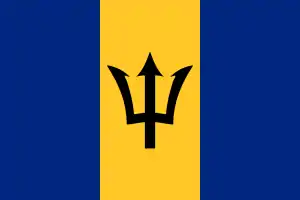 Barbados:
Barbados: Belize:
Belize: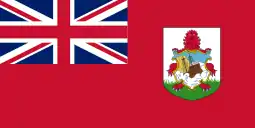 Bermuda: Rum swizzle[9][10]
Bermuda: Rum swizzle[9][10]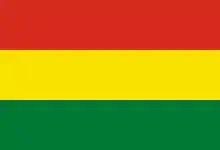 Bolivia (Plurinational State of):
Bolivia (Plurinational State of): Brazil: Caipirinha is a well known cocktail made of cachaça,[11][12][13] while Guaraná is a carbonated soft drink made from a fruit originary of Amazonia.
Brazil: Caipirinha is a well known cocktail made of cachaça,[11][12][13] while Guaraná is a carbonated soft drink made from a fruit originary of Amazonia. Curaçao: Curaçao liqueur is traditionally made with the dried peels of the Laraha, which is a bitter orange native to Curaçao.[14] It is distilled along with sweet fragrant oils, derived from the dried Laraha peels. Following distillation blue or orange colors are added for an exotic appearance.[15]
Curaçao: Curaçao liqueur is traditionally made with the dried peels of the Laraha, which is a bitter orange native to Curaçao.[14] It is distilled along with sweet fragrant oils, derived from the dried Laraha peels. Following distillation blue or orange colors are added for an exotic appearance.[15] Chile:Pisco sour
Chile:Pisco sour Colombia: Aguardiente, coffee
Colombia: Aguardiente, coffee Costa Rica: Imperial
Costa Rica: Imperial Cuba: Cuba Libre, Mojito, Daiquiri
Cuba: Cuba Libre, Mojito, Daiquiri Dominica:
Dominica: Dominican Republic:
Dominican Republic: Ecuador:Chicha
Ecuador:Chicha El Salvador:
El Salvador: Grenada:
Grenada: Guatemala:
Guatemala: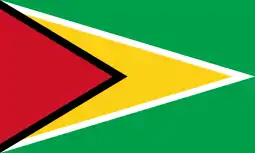 Guyana:
Guyana: Haiti: Barbancourt is a rum produced and bottled in Haiti by Société du Rhum Barbancourt, one Haiti's oldest companies. It is made by distillation of sugar cane juice rather than the sugar cane by-product molasses. Fermentation of fresh sugar cane juice is considered to provide a more flavorful product.[16]
Haiti: Barbancourt is a rum produced and bottled in Haiti by Société du Rhum Barbancourt, one Haiti's oldest companies. It is made by distillation of sugar cane juice rather than the sugar cane by-product molasses. Fermentation of fresh sugar cane juice is considered to provide a more flavorful product.[16] Honduras:
Honduras: Jamaica:
Jamaica: Nicaragua:
Nicaragua: Panama:
Panama: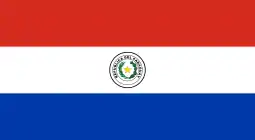 Paraguay: Mate is an infusion that is prepared by soaking dried yerba mate leaves in hot water and served with a metal straw and a hollow calabash. This is served and shared in the round, making it an integral part of society. Its origin is shared with Argentina and Uruguay.
Paraguay: Mate is an infusion that is prepared by soaking dried yerba mate leaves in hot water and served with a metal straw and a hollow calabash. This is served and shared in the round, making it an integral part of society. Its origin is shared with Argentina and Uruguay. Peru: Pisco sour[13][12][11] name comes from pisco, which is its base liquor, and the cocktail term sour, in reference to sour citrus juice and sweetener components. Originated in the city of Pisco.
Peru: Pisco sour[13][12][11] name comes from pisco, which is its base liquor, and the cocktail term sour, in reference to sour citrus juice and sweetener components. Originated in the city of Pisco.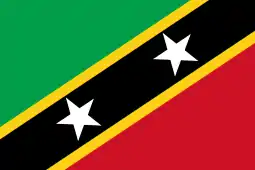 Saint Kitts and Nevis:
Saint Kitts and Nevis: Saint Lucia:
Saint Lucia: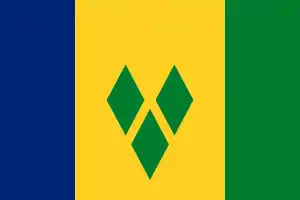 Saint Vincent and the Grenadines:
Saint Vincent and the Grenadines: Suriname:
Suriname: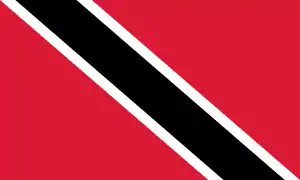 Trinidad and Tobago:
Trinidad and Tobago: Uruguay: Mate is an infusion that is prepared by soaking dried yerba mate leaves in hot water and served with a metal straw and a hollow calabash. This is served and shared in the round, making it an integral part of society. Its origin is shared with Argentina and Paraguay.
Uruguay: Mate is an infusion that is prepared by soaking dried yerba mate leaves in hot water and served with a metal straw and a hollow calabash. This is served and shared in the round, making it an integral part of society. Its origin is shared with Argentina and Paraguay. Venezuela (Bolivarian Republic of):
Venezuela (Bolivarian Republic of):
Europe
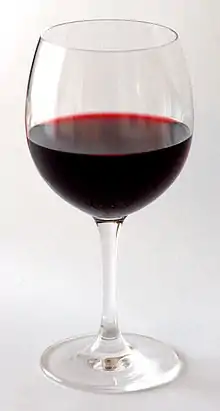
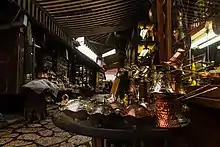
The "beer belt" in Western Europe includes Germany, the UK, and Ireland, whereas the "wine belt" includes the Mediterranean countries like Spain, Italy, and Greece. Several drinks are common and particular to Slavic countries. Vodka is a clear alcoholic beverage made most often by distilling the liquid from fermented cereal grains and potatoes. Countries where vodka is identified as a national beverage have been referred to as the "vodka belt". Kvass is a traditional fermented non-alcoholic beverage commonly made from rye bread and is drank in many Slavic countries, as well as the three Baltic countries of Latvia, Lithuania and Estonia. Kompot is another drink that is traditionally popular throughout this region and made by boiling together different fruit including strawberries, apricots, peaches, apples, and raisins in large volume of water and served hot or cold, depending on tradition and season. Fruit brandies are popular in the Balkans, while Brännvin and Akvavit are popular in Scandinavia.

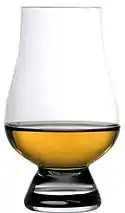
 Albania:
Albania: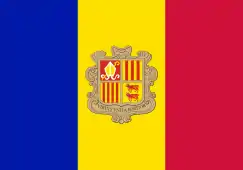 Andorra:
Andorra: Austria:
Austria: Belarus: Byarozavik is a Belarusian traditional drink made from birch sap, achieving widespread popularity in the Soviet Union before undergoing a modern resurgence.
Belarus: Byarozavik is a Belarusian traditional drink made from birch sap, achieving widespread popularity in the Soviet Union before undergoing a modern resurgence..svg.png.webp) Belgium: Belgium is situated in the “Beer belt” and is known for its beers and breweries. There are over 1,400 kinds of beer and this alcoholic drink is important in Belgian social life. See Belgian beer culture and Beer in Belgium
Belgium: Belgium is situated in the “Beer belt” and is known for its beers and breweries. There are over 1,400 kinds of beer and this alcoholic drink is important in Belgian social life. See Belgian beer culture and Beer in Belgium Bosnia and Herzegovina:
Bosnia and Herzegovina: Bulgaria: Bulgaria considers Rakia to be its national beverage, as well as the place of origin of this distilled beverage that can be made from fruits like plums and apricots.[17]
Bulgaria: Bulgaria considers Rakia to be its national beverage, as well as the place of origin of this distilled beverage that can be made from fruits like plums and apricots.[17] Croatia:
Croatia: Cyprus: Zivania
Cyprus: Zivania Czech Republic: Pilsner is a pale lager originated in Plzeň.
Czech Republic: Pilsner is a pale lager originated in Plzeň. Denmark:
Denmark: Estonia:
Estonia: Finland: Lonkero[18]
Finland: Lonkero[18] France: Red wine is a type of wine made from dark-colored (black) grape varieties.[19][20] Champagne is the typical white wine of France.
France: Red wine is a type of wine made from dark-colored (black) grape varieties.[19][20] Champagne is the typical white wine of France. Germany: Lager,[20][19] Fanta[21]
Germany: Lager,[20][19] Fanta[21] Greece: Ouzo is a dry anise-flavoured aperitif that is widely consumed in Greece and Cyprus.[22][19][20]
Greece: Ouzo is a dry anise-flavoured aperitif that is widely consumed in Greece and Cyprus.[22][19][20] Hungary: pálinka
Hungary: pálinka Iceland: Brennivín, Appelsín
Iceland: Brennivín, Appelsín Ireland: Guinness is a dark Irish dry stout.[23][24]
Ireland: Guinness is a dark Irish dry stout.[23][24] Italy: Chinotto a type of carbonated soft drink produced from the juice of the fruit of the myrtle-leaved orange tree (Citrus myrtifolia); Wine; Grappa; Espresso; Cappuccino
Italy: Chinotto a type of carbonated soft drink produced from the juice of the fruit of the myrtle-leaved orange tree (Citrus myrtifolia); Wine; Grappa; Espresso; Cappuccino Latvia: Riga Black Balsam[25]
Latvia: Riga Black Balsam[25] Liechtenstein:
Liechtenstein: Lithuania:: Midus, Gira
Lithuania:: Midus, Gira Luxembourg:
Luxembourg: Malta: Kinnie[26]
Malta: Kinnie[26] Republic of Moldova:
Republic of Moldova: Monaco:
Monaco: Montenegro:
Montenegro: Netherlands: Jenever
Netherlands: Jenever North Macedonia:
North Macedonia: Norway: Akvavit
Norway: Akvavit Poland: Like some other Eastern European countries, in Poland vodka is considered to be its national beverage. Along with cereal grains, Poland is also known for distilling it from potatoes. Like Russia does with its national drink, Poland also considers itself to be vodka's point of origin, dating back to the 15th century.[27] Another popular drink is Krupnik, a traditional sweet alcoholic drink similar to a liqueur, based on vodka and honey.
Poland: Like some other Eastern European countries, in Poland vodka is considered to be its national beverage. Along with cereal grains, Poland is also known for distilling it from potatoes. Like Russia does with its national drink, Poland also considers itself to be vodka's point of origin, dating back to the 15th century.[27] Another popular drink is Krupnik, a traditional sweet alcoholic drink similar to a liqueur, based on vodka and honey. Portugal: Port wine is a sweet Portuguese fortified wine produced with distilled grape spirits in the Douro Valley in the northern provinces of Portugal and is commonly served as a dessert wine.[28] There are also distinct sorts of non port portuguese wines produced in particular regions.[29]
Portugal: Port wine is a sweet Portuguese fortified wine produced with distilled grape spirits in the Douro Valley in the northern provinces of Portugal and is commonly served as a dessert wine.[28] There are also distinct sorts of non port portuguese wines produced in particular regions.[29] Romania: Țuică sometimes referred to as "white lightning" due to its clarity and potency, is a plum fruit brandy, that is distilled in a brass still, using traditional fire sources such as wood and charcoal. Țuică is traditionally drank prior to meals and at celebrations.[30]
Romania: Țuică sometimes referred to as "white lightning" due to its clarity and potency, is a plum fruit brandy, that is distilled in a brass still, using traditional fire sources such as wood and charcoal. Țuică is traditionally drank prior to meals and at celebrations.[30] Russia: Kvass is a traditional fermented non-alcoholic beverage commonly made from rye bread, and while kvass is seen as the national non-alcoholic drink, it is vodka that most Russians identify as their national alcoholic beverage.[31] Like in Poland, Russians consider their nation to be vodka's birthplace.[32]
Russia: Kvass is a traditional fermented non-alcoholic beverage commonly made from rye bread, and while kvass is seen as the national non-alcoholic drink, it is vodka that most Russians identify as their national alcoholic beverage.[31] Like in Poland, Russians consider their nation to be vodka's birthplace.[32]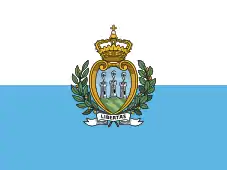 San Marino:
San Marino: Serbia: Rakia.
Serbia: Rakia. Slovakia: Borovička is a juniper alcoholic spirit.
Slovakia: Borovička is a juniper alcoholic spirit. Slovenia:
Slovenia: Spain: A punch, sangria traditionally consists of red wine and chopped fruit, often with other ingredients such as orange juice or brandy.[12][13]
Spain: A punch, sangria traditionally consists of red wine and chopped fruit, often with other ingredients such as orange juice or brandy.[12][13] Sweden: Brännvin, Punsch,[33] Akvavit
Sweden: Brännvin, Punsch,[33] Akvavit Switzerland: Rivella.
Switzerland: Rivella. Ukraine:
Ukraine: United Kingdom of Great Britain and Northern Ireland: Tea
United Kingdom of Great Britain and Northern Ireland: Tea
Africa
 Algeria:
Algeria: Angola:
Angola: Benin:
Benin: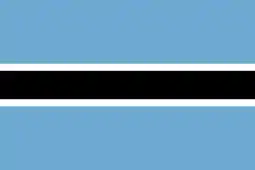 Botswana:
Botswana: Burkina Faso:
Burkina Faso: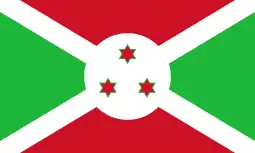 Burundi:
Burundi: Cabo Verde:
Cabo Verde: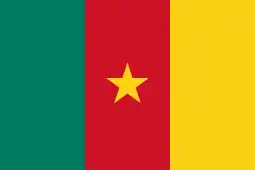 Cameroon:
Cameroon: Central African Republic:
Central African Republic: Chad:
Chad: Comoros:
Comoros: Congo:
Congo: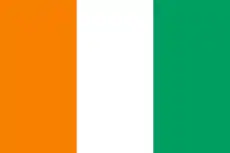 Côte d'Ivoire:
Côte d'Ivoire: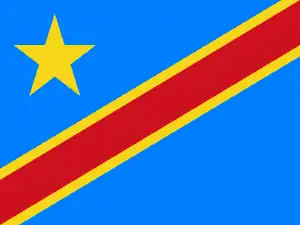 Democratic Republic of the Congo:
Democratic Republic of the Congo: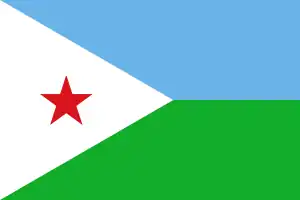 Djibouti:
Djibouti: Egypt: Black tea
Egypt: Black tea Equatorial Guinea:
Equatorial Guinea: Eritrea:
Eritrea: Ethiopia: Tej[11][36][37]
Ethiopia: Tej[11][36][37]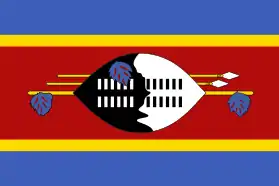 Eswatini:
Eswatini: Gabon:
Gabon: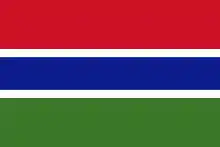 Gambia (Republic of The):
Gambia (Republic of The): Ghana:
Ghana: Guinea:
Guinea: Guinea-Bissau:
Guinea-Bissau: Kenya:
Kenya: Lesotho:
Lesotho: Liberia:
Liberia: Libya:
Libya: Madagascar:
Madagascar: Malawi:
Malawi: Mali:
Mali: Mauritania:
Mauritania: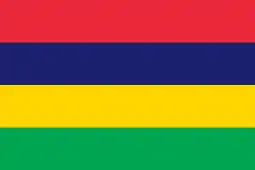 Mauritius:
Mauritius: Morocco: Moroccan mint tea (atai)[38][39] is a green tea prepared with spearmint leaves and sugar.
Morocco: Moroccan mint tea (atai)[38][39] is a green tea prepared with spearmint leaves and sugar.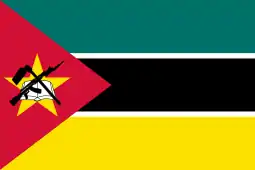 Mozambique:
Mozambique: Namibia:
Namibia: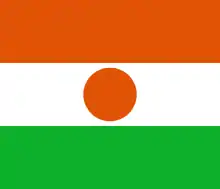 Niger:
Niger: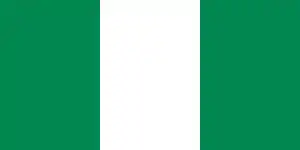 Nigeria:
Nigeria: Rwanda:
Rwanda: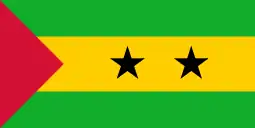 São Tomé and Príncipe:
São Tomé and Príncipe: Senegal:
Senegal: Seychelles:
Seychelles: Sierra Leone:
Sierra Leone: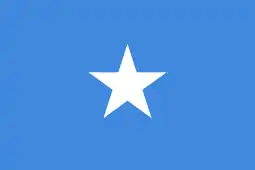 Somalia:
Somalia: South Africa:Brandy
South Africa:Brandy South Sudan:
South Sudan: Sudan:
Sudan: Togo:
Togo: Tunisia: Tea[40]
Tunisia: Tea[40] Uganda:
Uganda: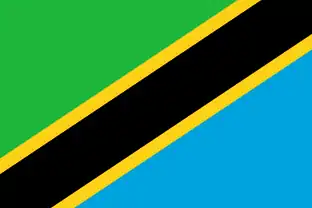 United Republic of Tanzania:
United Republic of Tanzania: Zambia:
Zambia: Zimbabwe: Chibuku[11][36]
Zimbabwe: Chibuku[11][36]
Asia-Pacific
East Asia
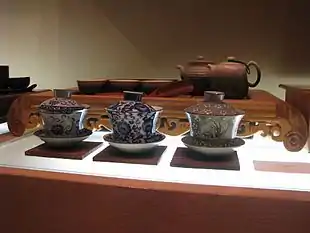
 China: Tea has been a vital part of the Chinese culture for thousands of years. China is considered to have the earliest records of tea consumption, with possible records dating back to the 10th century BC.[41][42] Depending on different traditional methods in processing the tea leaves, Chinese tea can be classified into at least six distinct categories, namely white tea, yellow tea, green tea, oolong tea, black tea and post-fermented tea (dark tea).
China: Tea has been a vital part of the Chinese culture for thousands of years. China is considered to have the earliest records of tea consumption, with possible records dating back to the 10th century BC.[41][42] Depending on different traditional methods in processing the tea leaves, Chinese tea can be classified into at least six distinct categories, namely white tea, yellow tea, green tea, oolong tea, black tea and post-fermented tea (dark tea).
- The Chinese national liquor, Baijiu (Chinese: 白酒; pinyin: báijiǔ; lit. 'white (clear) liquor') is a distilled alcoholic beverage made from various types of grains, including rice, glutinous rice, wheat, barley, millet and so on.[43][44] It was first made 5,000 years ago. Baijiu can be broken down into five main aroma categories: strong, light, sauce (soy, specifically), rice and mixed.
 Hong Kong: Hong Kong-style milk tea[45]
Hong Kong: Hong Kong-style milk tea[45] Macau: Coffee (typically served with condensed milk) and tea[46]
Macau: Coffee (typically served with condensed milk) and tea[46]
 Taiwan: Bubble tea[47][48] (also known as pearl milk tea, bubble milk tea, or boba) is a Taiwanese tea-based drink invented in the 1980s.[49]
Taiwan: Bubble tea[47][48] (also known as pearl milk tea, bubble milk tea, or boba) is a Taiwanese tea-based drink invented in the 1980s.[49] Japan: Green Tea.[50] Tea consumption became popular among the gentry during the 12th century, after the publication of Eisai's Kissa Yōjōki. Uji, with its strategic location near the capital at Kyoto, became Japan's first major tea-producing region during this period. Beginning in the 13th and 14th centuries, Japanese tea culture developed the distinctive features for which it is known today, and the Japanese tea ceremony emerged as a key component of that culture.
Japan: Green Tea.[50] Tea consumption became popular among the gentry during the 12th century, after the publication of Eisai's Kissa Yōjōki. Uji, with its strategic location near the capital at Kyoto, became Japan's first major tea-producing region during this period. Beginning in the 13th and 14th centuries, Japanese tea culture developed the distinctive features for which it is known today, and the Japanese tea ceremony emerged as a key component of that culture.
- Sake, also referred to as Japanese rice wine, is an alcoholic beverage made by fermenting rice that has been polished to remove the bran.[11][12][13]
 Mongolia: Airag (Mongolian: айраг [ˈai̯rəɡ])[51] or, in some areas, tsegee is a fermented dairy product traditionally made from mare's milk. The drink remains important to the peoples of the Central Asian steppes, of Huno-Bulgar, Turkic and Mongol origin: Kazakhs, Bashkirs, Kalmyks, Kyrgyz, Mongols, and Yakuts.[52] [53] A 1982 source reported 230,000 horses were kept in the Soviet Union specifically for producing milk to make into kumis.[54] Rinchingiin Indra, writing about Mongolian dairying, says "it takes considerable skill to milk a mare" and describes the technique: the milker kneels on one knee, with a pail propped on the other, steadied by a string tied to an arm. One arm is wrapped behind the mare's rear leg and the other in front. A foal starts the milk flow and is pulled away by another person, but left touching the mare's side during the entire process.[55] In Mongolia, the milking season for horses traditionally runs between mid-June and early October. During one season, a mare produces approximately 1,000 to 1,200 litres of milk, of which about half is left to the foals.[56]
Mongolia: Airag (Mongolian: айраг [ˈai̯rəɡ])[51] or, in some areas, tsegee is a fermented dairy product traditionally made from mare's milk. The drink remains important to the peoples of the Central Asian steppes, of Huno-Bulgar, Turkic and Mongol origin: Kazakhs, Bashkirs, Kalmyks, Kyrgyz, Mongols, and Yakuts.[52] [53] A 1982 source reported 230,000 horses were kept in the Soviet Union specifically for producing milk to make into kumis.[54] Rinchingiin Indra, writing about Mongolian dairying, says "it takes considerable skill to milk a mare" and describes the technique: the milker kneels on one knee, with a pail propped on the other, steadied by a string tied to an arm. One arm is wrapped behind the mare's rear leg and the other in front. A foal starts the milk flow and is pulled away by another person, but left touching the mare's side during the entire process.[55] In Mongolia, the milking season for horses traditionally runs between mid-June and early October. During one season, a mare produces approximately 1,000 to 1,200 litres of milk, of which about half is left to the foals.[56] North Korea: On 18 June 2019, Kim Jong-un designated Pyongyang Soju an alcoholic beverage that embodies the "innocent and tender hearts" of the North Korean people as the national beverage of North Korea, according to a state propaganda service.[57] Soju is a clear, colorless distilled beverage of Korean origin.[58]
North Korea: On 18 June 2019, Kim Jong-un designated Pyongyang Soju an alcoholic beverage that embodies the "innocent and tender hearts" of the North Korean people as the national beverage of North Korea, according to a state propaganda service.[57] Soju is a clear, colorless distilled beverage of Korean origin.[58] South Korea: Soju (/ˈsoʊdʒuː/; from Korean: 소주; 燒酒 [so.dʑu]) is a clear, colorless distilled beverage of Korean origin.[59][60][61] It is usually consumed neat, and its alcohol content varies from about 16.8% to 53% alcohol by volume (ABV).[62][63] Most brands of soju are made in South Korea. While soju is traditionally made from rice, wheat, or barley, modern producers often replace rice with other starches such as potatoes, sweet potatoes, or tapioca.[64]
South Korea: Soju (/ˈsoʊdʒuː/; from Korean: 소주; 燒酒 [so.dʑu]) is a clear, colorless distilled beverage of Korean origin.[59][60][61] It is usually consumed neat, and its alcohol content varies from about 16.8% to 53% alcohol by volume (ABV).[62][63] Most brands of soju are made in South Korea. While soju is traditionally made from rice, wheat, or barley, modern producers often replace rice with other starches such as potatoes, sweet potatoes, or tapioca.[64]
Southeast Asia
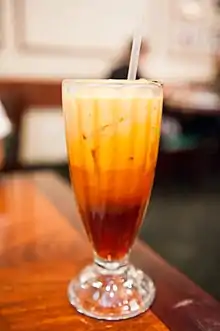
 Brunei:
Brunei: Cambodia: Sombai [65] (Sraa Tram / infused rice wine with the krama, Cambodian national cloth, on the bottle neck)
Cambodia: Sombai [65] (Sraa Tram / infused rice wine with the krama, Cambodian national cloth, on the bottle neck) Indonesia: Es teler, a sweet iced concoction created by Murniati Widjaja, who won a competition to come up with a national drink for Indonesia in 1982.[66][67]
Indonesia: Es teler, a sweet iced concoction created by Murniati Widjaja, who won a competition to come up with a national drink for Indonesia in 1982.[66][67] Malaysia: Teh tarik (literally "pulled tea") is a hot milk tea beverage which can be commonly found in restaurants, outdoor stalls and kopi tiams within the Southeast Asian country of Malaysia.[68] Its name is derived from the pouring process of "pulling" the drink during preparation. It is made from a strong brew of black tea blended with condensed milk. It is the national drink of Malaysia.[69]
Malaysia: Teh tarik (literally "pulled tea") is a hot milk tea beverage which can be commonly found in restaurants, outdoor stalls and kopi tiams within the Southeast Asian country of Malaysia.[68] Its name is derived from the pouring process of "pulling" the drink during preparation. It is made from a strong brew of black tea blended with condensed milk. It is the national drink of Malaysia.[69]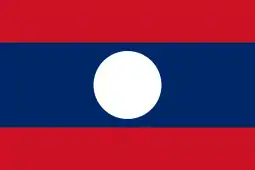 Laos: Lao-Lao (Lao: ເຫລົ້າລາວ) is a Laotian rice whisky produced in Laos.[70][71] Along with Beerlao, lao-Lao is a staple drink in Laos. The name lao-Lao is not the same word repeated twice, but two different words pronounced with different tones: the first, ເຫລົ້າ, means "alcohol" and is pronounced with a low-falling tone in the standard dialect, while the second, ລາວ, means Laotian ("Lao") and is pronounced with a high(-rising) tone.
Laos: Lao-Lao (Lao: ເຫລົ້າລາວ) is a Laotian rice whisky produced in Laos.[70][71] Along with Beerlao, lao-Lao is a staple drink in Laos. The name lao-Lao is not the same word repeated twice, but two different words pronounced with different tones: the first, ເຫລົ້າ, means "alcohol" and is pronounced with a low-falling tone in the standard dialect, while the second, ລາວ, means Laotian ("Lao") and is pronounced with a high(-rising) tone. Myanmar: Lahpet yay is brewed from a mix of fermented or pickled tea, sweetened condensed milk and evaporated milk. It is traditionally served hot in Burmese tea houses - open air, bustling, street corner places.[72][73]
Myanmar: Lahpet yay is brewed from a mix of fermented or pickled tea, sweetened condensed milk and evaporated milk. It is traditionally served hot in Burmese tea houses - open air, bustling, street corner places.[72][73] Philippines: San Miguel Beer. [74]
Philippines: San Miguel Beer. [74] Singapore: Kopi is a type of traditional highly caffeinated black coffee, sometimes served with milk and/or sugar. This drink originates from Peninsular Malaysia, with Hainanese roots. It is also otherwise known as Nanyang coffee. Nanyang means ‘South Sea’ in Mandarin, and usually references to Southeast Asia.[75] The Singapore coffee is recognized to be culturally significant[76] and part of the everyday diet and lifestyle of many Singaporeans.[77]
Singapore: Kopi is a type of traditional highly caffeinated black coffee, sometimes served with milk and/or sugar. This drink originates from Peninsular Malaysia, with Hainanese roots. It is also otherwise known as Nanyang coffee. Nanyang means ‘South Sea’ in Mandarin, and usually references to Southeast Asia.[75] The Singapore coffee is recognized to be culturally significant[76] and part of the everyday diet and lifestyle of many Singaporeans.[77]
- The Singapore Sling is a gin-based sling cocktail from Singapore. It was created before 1915 by Chinese-born Ngiam Tong Boon (Chinese: 严崇文; pinyin: Yán Chóng-Wén) at the Long Bar in Raffles Hotel, Singapore, and is considered the national cocktail.
 Thailand: Thai tea is a Thai drink made from tea, milk and sugar, and served hot or cold. It is popular in Southeast Asia and is served in many restaurants that serve Thai food.[78] When served cold it is known as Thai iced tea. Another highly popular drink is Krating Daeng, an energy drink which was first introduced in 1976. In Thai, daeng means red, and a krating is a large species of wild bovine native to South Asia. Krating Daeng inspired the creation of the Western drink Red Bull.
Thailand: Thai tea is a Thai drink made from tea, milk and sugar, and served hot or cold. It is popular in Southeast Asia and is served in many restaurants that serve Thai food.[78] When served cold it is known as Thai iced tea. Another highly popular drink is Krating Daeng, an energy drink which was first introduced in 1976. In Thai, daeng means red, and a krating is a large species of wild bovine native to South Asia. Krating Daeng inspired the creation of the Western drink Red Bull. Timor-Leste:
Timor-Leste: Vietnam:
Vietnam:
Oceania
.svg.png.webp) Australia: An ABC News article published in 2018 described lemon, lime and bitters as "Australia's national drink".[79] Lemon, lime and bitters (LLB) is a mixed drink made with (clear) lemonade, lime cordial, and Angostura bitters. The lemonade is sometimes substituted with soda water[79] or lemon squash. It was served as a non-alcoholic alternative to "Pink Gin" (gin mixed with Angostura bitters).[79] It is often considered to be a non-alcoholic cocktail (or mocktail) due to its exceedingly low alcohol content, though some establishments consider it to be alcoholic and will not serve it without identification or proof of age.
Australia: An ABC News article published in 2018 described lemon, lime and bitters as "Australia's national drink".[79] Lemon, lime and bitters (LLB) is a mixed drink made with (clear) lemonade, lime cordial, and Angostura bitters. The lemonade is sometimes substituted with soda water[79] or lemon squash. It was served as a non-alcoholic alternative to "Pink Gin" (gin mixed with Angostura bitters).[79] It is often considered to be a non-alcoholic cocktail (or mocktail) due to its exceedingly low alcohol content, though some establishments consider it to be alcoholic and will not serve it without identification or proof of age.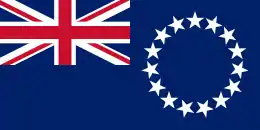 Cook Islands:
Cook Islands: Easter Island:
Easter Island: Fiji: Most Fijians would say that Kava is the unofficial national drink of Fiji. In Fiji, kava (also called "grog" or "yaqona") is drunk at all times of day in both public and private settings. The consumption of the drink is a form of welcome and figures in important socio-political events. Both genders drink kava. Kava is consumed for its sedating effects throughout the Pacific Ocean cultures of Polynesia, including Hawaii, Vanuatu, Melanesia, and some parts of Micronesia. To a lesser extent, it is consumed in nations where it is exported as an herbal medicine.
Fiji: Most Fijians would say that Kava is the unofficial national drink of Fiji. In Fiji, kava (also called "grog" or "yaqona") is drunk at all times of day in both public and private settings. The consumption of the drink is a form of welcome and figures in important socio-political events. Both genders drink kava. Kava is consumed for its sedating effects throughout the Pacific Ocean cultures of Polynesia, including Hawaii, Vanuatu, Melanesia, and some parts of Micronesia. To a lesser extent, it is consumed in nations where it is exported as an herbal medicine. French Polynesia:
French Polynesia: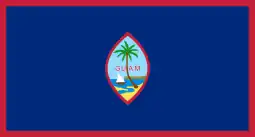 Guam:
Guam: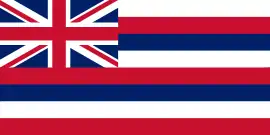 Hawaii:
Hawaii: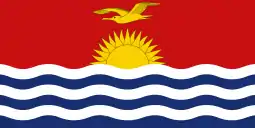 Kiribati: Karewe is a palm wine beverage made from "Toddy" (sap of certain coconut palms) in Kiribati. It is said that "Every male child in Kiribati is expected to learn climbing and toddy cutting from very early age just as a female child is expected to learn cooking and weaving from very early age".[80][12][13] It is known by various names in different regions and is common in various parts of Asia, Africa, the Caribbean, South America, and Micronesia. Karewe production by smallholders and individual farmers may promote conservation as palm trees become a source of regular household income that may economically be worth more than the value of timber sold.[81]
Kiribati: Karewe is a palm wine beverage made from "Toddy" (sap of certain coconut palms) in Kiribati. It is said that "Every male child in Kiribati is expected to learn climbing and toddy cutting from very early age just as a female child is expected to learn cooking and weaving from very early age".[80][12][13] It is known by various names in different regions and is common in various parts of Asia, Africa, the Caribbean, South America, and Micronesia. Karewe production by smallholders and individual farmers may promote conservation as palm trees become a source of regular household income that may economically be worth more than the value of timber sold.[81] Marshall Islands:
Marshall Islands: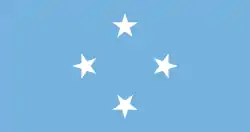 Micronesia: Sakau
Micronesia: Sakau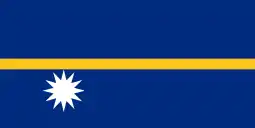 Nauru;
Nauru; New Caledonia:
New Caledonia: New Zealand: L&P
New Zealand: L&P Niue:
Niue: Northern Mariana Islands:
Northern Mariana Islands: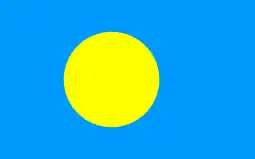 Palau:
Palau: Papua New Guinea:
Papua New Guinea: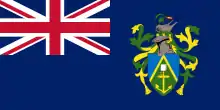 Pitcairn Islands:
Pitcairn Islands: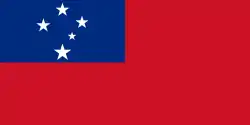 Samoa:(Including
Samoa:(Including 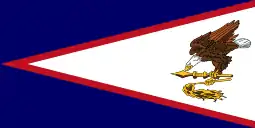 American Samoa)
American Samoa) Solomon Islands
Solomon Islands Tokelau:
Tokelau: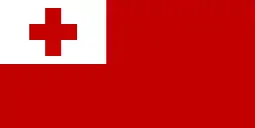 Tonga: Kava, is a very important drink in Tonga, some would also argue that it is their unofficial national drink. In Tonga, kava is like alcohol and drunk nightly at kalapu (Tongan for "club"), which is also called a faikava ("to do kava"). Only men are allowed to drink the kava, although women who serve it may be present. The female server is usually an unmarried, young woman called the "touʻa." In the past, this was a position reserved for women being courted by an unmarried male, and much respect was shown. These days, it is imperative that the touʻa not be related to anyone in the kalapu, and if someone is found to be a relative of the touʻa, he (not the touʻa) will leave the club for that night; otherwise the brother-sister taboo would make it impossible to talk openly, especially about courtship. Foreign girls, especially volunteer workers from overseas are often invited to be a touʻa for a night. If no female touʻa can be found, or it is such a small, very informal gathering, one of the men will do the job of serving the kava root; this is called fakatangata ("all-man"). See Tongan Kava Ceremony for more information.
Tonga: Kava, is a very important drink in Tonga, some would also argue that it is their unofficial national drink. In Tonga, kava is like alcohol and drunk nightly at kalapu (Tongan for "club"), which is also called a faikava ("to do kava"). Only men are allowed to drink the kava, although women who serve it may be present. The female server is usually an unmarried, young woman called the "touʻa." In the past, this was a position reserved for women being courted by an unmarried male, and much respect was shown. These days, it is imperative that the touʻa not be related to anyone in the kalapu, and if someone is found to be a relative of the touʻa, he (not the touʻa) will leave the club for that night; otherwise the brother-sister taboo would make it impossible to talk openly, especially about courtship. Foreign girls, especially volunteer workers from overseas are often invited to be a touʻa for a night. If no female touʻa can be found, or it is such a small, very informal gathering, one of the men will do the job of serving the kava root; this is called fakatangata ("all-man"). See Tongan Kava Ceremony for more information. Tuvalu
Tuvalu Vanuatu:
Vanuatu: Wake Island:
Wake Island: Wallis and Futuna:
Wallis and Futuna:
South Asia
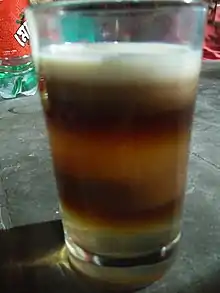
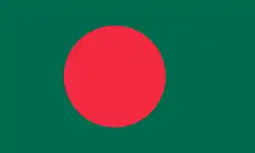 Bangladesh: Tea (Bengali: চা, romanized: Cha) is considered to be the national drink of Bangladesh, with Government bodies such as the Bangladesh Tea Board and the Bangladesh Tea Research Institute supporting the production, certification and exportation of the tea trade in the country.[82] Recently new types of tea, such as the Seven Color Tea or seven-layer tea (Bengali: সাত রং চা, romanized: Shat Rong Cha) has popped up as a well known beverage of the country's Sylhet Division.[83][84] Romesh Ram Gour invented the seven-layer tea after discovering that different tea leaves have different densities.[85][84] Each layer contrasts in color and taste, ranging from syrupy sweet to spicy clove. The result is an alternating dark/light band pattern throughout the drink, giving the tea its name.
Bangladesh: Tea (Bengali: চা, romanized: Cha) is considered to be the national drink of Bangladesh, with Government bodies such as the Bangladesh Tea Board and the Bangladesh Tea Research Institute supporting the production, certification and exportation of the tea trade in the country.[82] Recently new types of tea, such as the Seven Color Tea or seven-layer tea (Bengali: সাত রং চা, romanized: Shat Rong Cha) has popped up as a well known beverage of the country's Sylhet Division.[83][84] Romesh Ram Gour invented the seven-layer tea after discovering that different tea leaves have different densities.[85][84] Each layer contrasts in color and taste, ranging from syrupy sweet to spicy clove. The result is an alternating dark/light band pattern throughout the drink, giving the tea its name.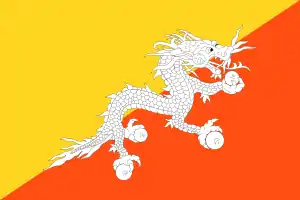 Bhutan: Ara, or Arag, (Tibetan and Dzongkha: ཨ་རག་; Wylie: a-rag; "alcohol, liquor") is a traditional alcoholic beverage consumed in Bhutan. Ara is made from native high-altitude tolerant barley, rice, maize, millet, or wheat, and may be either fermented or distilled. The beverage is usually a clear, creamy, or white color.[86]
Bhutan: Ara, or Arag, (Tibetan and Dzongkha: ཨ་རག་; Wylie: a-rag; "alcohol, liquor") is a traditional alcoholic beverage consumed in Bhutan. Ara is made from native high-altitude tolerant barley, rice, maize, millet, or wheat, and may be either fermented or distilled. The beverage is usually a clear, creamy, or white color.[86] India: Originating in Punjab and most popular in northern parts of India, Lassi a cold and refreshing drink, can be sweet or salty and is a blend of yogurt, water, spices and sometimes fruit like mango.[87][88] While the Masala chai is a hot, sweet tea popular throughout the subcontinent and is a combination of brewed black tea, aromatic spices and herbs, milk and sugar.[89] In southern India, the iconic beverage is Kaapi, also known as Indian filter coffee, which is made by mixing frothed and boiled milk with coffee brewed through a metal filter.[90]
India: Originating in Punjab and most popular in northern parts of India, Lassi a cold and refreshing drink, can be sweet or salty and is a blend of yogurt, water, spices and sometimes fruit like mango.[87][88] While the Masala chai is a hot, sweet tea popular throughout the subcontinent and is a combination of brewed black tea, aromatic spices and herbs, milk and sugar.[89] In southern India, the iconic beverage is Kaapi, also known as Indian filter coffee, which is made by mixing frothed and boiled milk with coffee brewed through a metal filter.[90]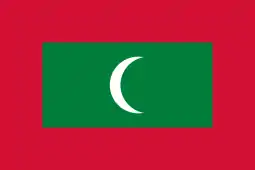 Maldives: It can be said that the Maldives have two national drinks. Firstly, due to their history and location near the Indian Subcontinent Sai (tea) is a Maldivian favourite. Secondly, as the Maldives are truly an Island nation, Raa (toddy tapped from palm trees) is also has its place in the national identity of the Maldives. Sometimes Raa is left to ferment and thus slightly alcoholic – the closest any Maldivian gets to alcohol.
Maldives: It can be said that the Maldives have two national drinks. Firstly, due to their history and location near the Indian Subcontinent Sai (tea) is a Maldivian favourite. Secondly, as the Maldives are truly an Island nation, Raa (toddy tapped from palm trees) is also has its place in the national identity of the Maldives. Sometimes Raa is left to ferment and thus slightly alcoholic – the closest any Maldivian gets to alcohol. Nepal: Raksi[91] is a strong drink, clear like vodka or gin, tasting somewhat like Japanese sake. It is usually made from kodo millet (kodo) or rice; different grains produce different flavors.[92] The Limbus, for whom it is a traditional beverage,[93] drink an enormous amount of Tongba and raksi served with pieces of Pork, Water buffalo or Goat meat Sekuwa.[94] For the Newars, aylaa is indispensable during festivals and various religious rituals as libation, prasad or sagan.
Nepal: Raksi[91] is a strong drink, clear like vodka or gin, tasting somewhat like Japanese sake. It is usually made from kodo millet (kodo) or rice; different grains produce different flavors.[92] The Limbus, for whom it is a traditional beverage,[93] drink an enormous amount of Tongba and raksi served with pieces of Pork, Water buffalo or Goat meat Sekuwa.[94] For the Newars, aylaa is indispensable during festivals and various religious rituals as libation, prasad or sagan. Pakistan: Sugarcane juice.[95]
Pakistan: Sugarcane juice.[95] Sri Lanka:
Sri Lanka:
Central and West Asia
Central Asia
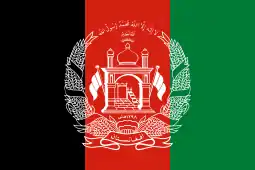 Afghanistan:
Afghanistan: Kazakhstan: fermented horse milk
Kazakhstan: fermented horse milk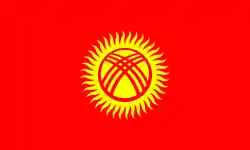 Kyrgyzstan: maksym[96] or jarma which are made out of barley
Kyrgyzstan: maksym[96] or jarma which are made out of barley Tajikistan:
Tajikistan: Turkmenistan:
Turkmenistan: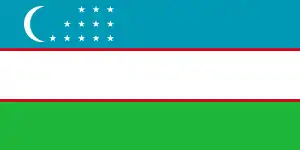 Uzbekistan:
Uzbekistan:
West Asia
 Armenia: Armenian Brandy
Armenia: Armenian Brandy Azerbaijan:
Azerbaijan: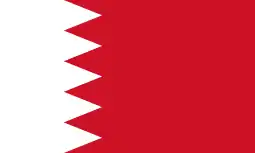 Bahrain:
Bahrain: Egypt:
Egypt: Georgia:
Georgia: Iraq:
Iraq: Iran: Doogh - Persian yogurt drink
Iran: Doogh - Persian yogurt drink Israel: Goldstar
Israel: Goldstar Jordan: Arabian Coffee, in small shots, non-sweetened and arak (drink)
Jordan: Arabian Coffee, in small shots, non-sweetened and arak (drink) Kuwait:
Kuwait: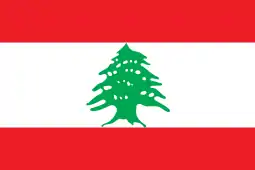 Lebanon:arak (drink)
Lebanon:arak (drink) 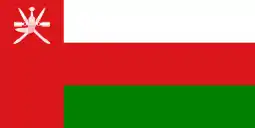 Oman:
Oman: Palestine:arak
Palestine:arak Qatar: Karak (drink)
Qatar: Karak (drink) Saudi Arabia:
Saudi Arabia: Syria:
Syria: Turkey: raki;[97][98] tea; ayran (as proclaimed by Prime Minister Tayyip Erdogan in 2013) is a non-alcoholic yogurt drink[99][100]
Turkey: raki;[97][98] tea; ayran (as proclaimed by Prime Minister Tayyip Erdogan in 2013) is a non-alcoholic yogurt drink[99][100]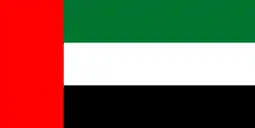 United Arab Emirates:
United Arab Emirates: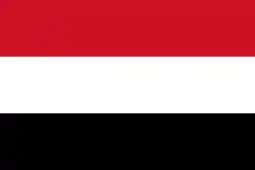 Yemen:
Yemen:
Gallery
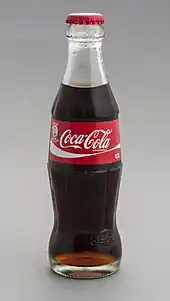

 Kaapi, Indian filter coffee.
Kaapi, Indian filter coffee. A typical informal faikava in Tonga with the touʻa serving the men.
A typical informal faikava in Tonga with the touʻa serving the men.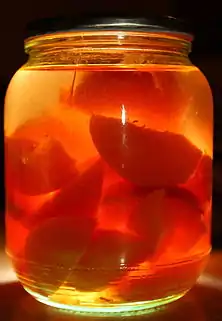
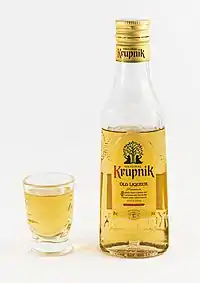
.jpg.webp)
 Krating Daeng, an energy drink, created in Thailand.
Krating Daeng, an energy drink, created in Thailand. Lemon, lime and bitters, is commonly consumed in Australia and New Zealand.
Lemon, lime and bitters, is commonly consumed in Australia and New Zealand. The new Seven Color Tea, a recent competitor for national drink of Bangladesh.
The new Seven Color Tea, a recent competitor for national drink of Bangladesh.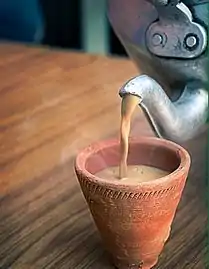 Indian Masala chai served in a red clay tea cup.
Indian Masala chai served in a red clay tea cup.
See also
References
- Caballero, B.; Finglas, P.; Toldra, F. (2015). Encyclopedia of Food and Health. Elsevier Science. pp. 345–351. ISBN 978-0-12-384953-3. Retrieved December 6, 2017.
- Zilkia Janer (2008). Latino food culture. Food cultures in America. ABC-CLIO. pp. 71–73. ISBN 9780313340277.
- "United Nations Regional Groups of Member States". Department for General Assembly and Conference Management. United Nations. n.d. Retrieved 5 March 2019.
- Graveland, Bill (2009-05-14). "We stand on guard – for our favourite cocktail". Winnipeg Free Press. Retrieved 2019-06-27.
- https://www.georgewashingtoninn.com/blog/the-history-of-coffee#:~:text=The%20History%20of%20Coffee%2C%20America's,coffee%20the%20%E2%80%9Cnational%20drink%E2%80%9D.
- https://www.cnbc.com/2009/11/09/The-Evolution-of-an-American-Icon.html
- https://theweek.com/articles/569443/how-bourbon-became-americas-national-spirit
- Woodman, Stephen. "Mexico's Senate Just Declared a New National Tequila Day". Culture Trip. Retrieved 2019-06-28.
- Nalewicki, Jennifer (March 15, 2019). "The Story Behind Bermuda's Rum Swizzle (Recipe)". Smithsonian. Retrieved 11 June 2019.
- Jordan, Christina (October 25, 2017). "Cheers! Here's how to swizzle the national cocktail of Bermuda". Florida Today. Retrieved 11 June 2019.
The Rum Swizzle is probably the most well known swizzled cocktail. It’s the national drink of Bermuda and uses Bermuda Rum.
- Willett, Megan. "The Most Iconic Beverage In 80 Countries Around The World". Business Insider. Retrieved 2019-05-20.
- "32 Official(ish) Drinks for Every Country Playing in the World Cup". Food & Wine. Retrieved 2019-05-20.
- Rose, Jeremy (2018-06-14). "The Signature Drink of Every Country in the World Cup Gallery". The Daily Meal. Retrieved 2019-05-20.
- "Genuine Curaçao Liqueur and Premium Blue Curaçao | Senior Curaçao Liqueur". www.curacaoliqueur.com. Retrieved 2019-07-01.
- "Webpage about Curacao Liqueur and Triple secs". Archived from the original on May 29, 2013. Retrieved 2012-01-01.
- "In Haiti, a rum everyone can agree on". Los Angeles Times. 2010-02-09. ISSN 0458-3035. Retrieved 2019-07-03.
- "Bulgarian Archaeologists Discover 11th Century Rakia Distillation Vessel – Novinite.com – Sofia News Agency". www.novinite.com. Retrieved 2019-06-16.
- Joakim Persson (November 6, 2016). "Finnish Hartwall Original Long Drink now in Hong Kong". ScandAsia. Retrieved August 21, 2020.
- "32 Official(ish) Drinks for Every Country Playing in the World Cup". Food & Wine. Retrieved 2019-05-19.
- Rose, Jeremy (2018-06-14). "The Signature Drink of Every Country in the World Cup Gallery". The Daily Meal. Retrieved 2019-05-19.
- Cheung, Tim (2017-07-12). "World's 50 most delicious drinks". CNN Travel. Retrieved 2019-05-20.
- Willett, Megan. "The Most Iconic Beverage In 80 Countries Around The World". Business Insider. Retrieved 2019-05-19.
- GUINNESS®. "Famous Brewer Expands with National Launch of GUINNESS® Black Lager". www.prnewswire.com. Retrieved 2019-05-19.
- "Why Guinness is less Irish than you think". The Economist. 2014-03-16. ISSN 0013-0613. Retrieved 2019-05-19.
- Katy Spratte Joyce (2020). "The Global Sip: Riga Black Balsam: Latvia's funky, herby liqueur". Chilled. Retrieved January 22, 2021.
- Rix, Juliet (3 December 2015). Malta and Gozo. ISBN 9781784770259.
- "History of vodka production, at the official page of Polish Spirit Industry Association (KRPS), 2007" (in Polish). Archived from the original on 30 September 2007.
- "Porto wine – Made in Portugal". Portugal.com. Retrieved 2019-06-21.
- Schiessl, Courtney. "Portuguese Wines For Every Palate". Forbes. Retrieved 2019-06-21.
- Stein, Max (December 6, 2012). "Tuica – Romania's White Lightning". The Drinks Business.
- Ermochkine, Nicholas and Iglikowski, Peter (2003). 40 degrees east: an anatomy of vodka, Nova Publishers, p. 65, ISBN 1-59033-594-5.
- Pokhlebkin V. V. / Похлёбкин В. В. (2007). The history of vodka / История водки. Moscow: Tsentrpoligraph / Центрполиграф. p. 272. ISBN 978-5-9524-1895-0.
- "Populär punch". www.aperitifklubben.se. Retrieved 2019-12-26.
- "The Scotch Whisky Regulations 2009". www.legislation.gov.uk. Retrieved 2019-06-12.
- Brooks, Libby (2007-05-30). "Scotland's other national drink". The Guardian. ISSN 0261-3077. Retrieved 2019-06-12.
- "59 national drinks from 59 awesome countries". Matador Network. Retrieved 2019-05-20.
- Alexander, Kevin (2014-03-15). "World booze guide: The best things to drink in 43 countries". Thrillist. Retrieved 2019-05-20.
- Urban, Shilo. "The Art of Moroccan Mint Tea and How to Brew It". Organic Authority. Retrieved 2019-07-31.
- "How to Make the Perfect Pot of Moroccan Mint Tea". The Spruce Eats. Retrieved 2019-07-31.
- Studer, Nina (27 February 2019). "In 1930s Tunisia, French Doctors Feared a 'Tea Craze' Would Destroy Society". Atlas Obscura. Retrieved 11 June 2019.
- "Tea". Encarta. Archived from the original on 2008-03-08. Retrieved 2008-07-23.
- "Tea". The Columbia Encyclopedia Sixth Edition. 2001–07. Retrieved 2008-07-23.
- Zheng, Xiao‐Wei, et al. "Daqu—A traditional Chinese liquor fermentation starter." Journal of the Institute of Brewing 117.1 (2011): 82–90.
- Rong and Fa, Grandiose Survey of Chinese Alcoholic Drinks and Beverages, 2013, "Archived copy". Archived from the original on 2014-07-29. Retrieved 2015-05-29.CS1 maint: archived copy as title (link)
- Hui, Sylvia (March 5, 2006). "'Pantyhose Tea' Has Leg Up in Hong Kong". The LA Times. Retrieved August 28, 2020.
- Lao-Phillips, Jenny (June 22, 2017). "MADE IN MACAO: COFFEE, TEA OR BOTH?". Macau Daily Times. Retrieved August 28, 2020.
- Jones, Edward (2018-11-13). "Who invented bubble tea? – Taipei Times". Taipei Times. Retrieved 11 June 2019.
Surprisingly little is known for sure about the origin of Taiwan’s national drink
- Tai, Gloria. "Bubble Tea". China Live. Retrieved 11 June 2019.
It can almost be considered a national drink in Taiwan where it originated and took by storm in the 1980’s
- Martin, Laura C. (2007). Tea: The drink that changed the world. Rutland: Tuttle Publishing. p. 219. ISBN 9780804837248.
- Kita, Satoye (January 12, 2009). "OCHA: JAPAN'S NATIONAL DRINK". The Bulletin. Retrieved August 27, 2020.
- "Airag – Fermented Mare's Milk – Mongolian Beverage".
- Zeder, Melinda A. ed. (2006). Documenting Domestication: New Genetic and Archaeological Paradigms. University of California Press. p. 264. ISBN 0-520-24638-1.CS1 maint: extra text: authors list (link)
- Anderson (1988), p. 80.
- Steinkraus, Keith H. ed (1995). Handbook of Indigenous Fermented Foods. Marcel Dekker. p. 304. ISBN 0-8247-9352-8.CS1 maint: extra text: authors list (link)
- Indra, Rinchingiin (2003). "Mongolian Dairy Products". In Dendev Badarch, Raymond A Zilinskas (ed.). Mongolia Today: Science, Culture, Environment and Development. Routledge. p. 74. ISBN 0-7007-1598-3.
- Indra p. 73.
- Shim, Elizabeth (2019-06-18). "Pyongyang Soju selected national beverage of North Korea". UPI. ISSN 0261-3077. Retrieved 2019-07-30.
- Miller, Norman (2013-12-02). "Soju: the most popular booze in the world". The Guardian. ISSN 0261-3077. Retrieved 2019-05-20.
- "soju". Oxford Dictionary of English. Oxford University Press. Retrieved 14 April 2017.
- "soju". Merriam-Webster Dictionary. Encyclopædia Britannica. Retrieved 22 November 2014.
- Miller, Norman (2 December 2013). "Soju: the most popular booze in the world". The Guardian. Retrieved 13 April 2017.
- Park, Eun-jee (19 November 2014). "Koreans looking for weaker soju". Korea JoongAng Daily. Retrieved 14 April 2017.
- Hall, Joshua (17 October 2014). "Soju Makers Aim to Turn Fire Water Into Liquid Gold". The Wall Street Journal. Retrieved 24 December 2014.
- Archibald, Anna (27 August 2015). "Why You Should Be Drinking Korean Soju Right Now". Liquor.com. Retrieved 14 December 2015.
- "59 NATIONAL DRINKS FROM 59 AWESOME COUNTRIES". Matadornetwork. 2013-08-22.
- Es teler
- Pat Tanumihardja (May 27, 2018). "Indonesia's delicious twist on avocados". The Week. Retrieved August 21, 2020.
- "Disputes – International". CIA. Retrieved 4 January 2011.
- "Lipton urges Malaysians to take pride in teh tarik, our national beverage". New Sabah Times. 7 September 2012. Archived from the original on 2 July 2014. Retrieved 6 November 2013.
- Sally Everett (12 April 2016). Food and Drink Tourism: Principles and Practice. SAGE Publications. p. 301. ISBN 978-1-4739-6597-3.
- "The cheapest alcohol in the world: Lao-Lao, Laos rice whiskey". www.priceoftravel.com. Retrieved 17 July 2017.
- Gora, Sasha (2015-03-27). "Taking the Machismo and MSG Out of Myanmar's Tea Shops". Vice. Retrieved 2019-10-20.
- Crane, Brent (2019-10-20). "The Underage Tea Boys of Myanmar". Vice. Archived from the original on 2019-10-20. Retrieved 2019-10-20.
- Tiu, Cheryl (July 9, 2014). "Revolution and rum: 18 drinks inspired by the Philippines". CNN. Retrieved August 21, 2020.
- "Traditional Breakfast of Kaya and Kopi". www.roots.sg. Retrieved 2020-05-19.
- Aljunied, Khairudin (2014). "Coffee-shops in Colonial Singapore: Domains of Contentious Publics". History Workshop Journal. 77: 65–85. doi:10.1093/hwj/dbt011. S2CID 154985319 – via Oxford Academic.
- Max Falkowitz (August 7, 2012). "Snapshots from Singapore: A Guide to Singaporean Coffee". Seriouseats.com. Retrieved August 21, 2020.
- "History of Tea in Thailand".
- Kriewaldt, Kit (8 December 2018). "We drink more than 100 million a year and it's all ours". ABC News. Retrieved 8 December 2018.
- Imperor, Rex (2013-12-02). "Toddy: The national drink of Kiribati". Imperor, All about the monarchy. ISSN 0261-3077. Retrieved 2019-07-30.
- Confirel:Sugar Palm Tree – Conservation of natural heritage retrieved on 15 April 2012
- Bangladesh Tea Research Institute, Banglapedia
- "সিলেটের সাতরঙা চা এর রহস্য ভেদ, জানুন তৈরির নিয়ম" (in Bengali). The Daily Prothom Alo. Archived from the original on May 4, 2017. Retrieved November 4, 2017.
- "Making rainbows in a glass – seven-layer tea in Bangladesh". The Guardian. Retrieved November 2, 2017.
- "One Glass, Seven Layers of Tea – Scene Asia". Wall Street Journal Blog. Retrieved November 7, 2017.
- "Merak and Sakteng – The Land of Brokpas". Wind Horse Tours online. Archived from the original on 2011-09-27. Retrieved 2011-07-27.
- "Lassi | beverage". Encyclopedia Britannica. Retrieved 2019-06-15.
- "5 Best Lassi Recipes: The Ultimate Summer Cooler from Punjab". NDTV Food. Retrieved 2019-06-15.
- Perry, Sara (August 2001). The New Tea Book: A Guide to Black, Green, Herbal and Chai Teas. Chronicle Books. ISBN 9780811830539.
- Harish, Chef (2014-08-22). "Make fantastic filter kaapi". The Hindu. ISSN 0971-751X. Retrieved 2019-06-15.
- Ethnic Fermented Foods and Alcoholic Beverages of Asia, Front Cover By Jyoti Prakash Tamang, Springer, 5 Aug 2016 – Technology & Engineering – 409 pages, P.107
- "Nepal: Liquor". The Global Gourmet. Archived from the original on 9 March 2016.
- P.67 Land and Social Change in East Nepal: A Study of Hindu-Tribal Relations By Professor Lionel Caplan, Lionel Caplan
- p.34 Kinship and Marriage Among the Limbu of Eastern Nepal: A Study By Rex Lee Jones – 1973
- "Sugarcane juice declared 'national drink' of Pakistan after Twitter poll". Hindustan Times. January 25, 2019. Retrieved August 21, 2020.
- Bakirova, Elita (2015-06-22). "Kyrgyzstan's fermented drink: a strong, salty national treasure". The Guardian. ISSN 0261-3077. Retrieved 2020-01-14.
- Nadworny, Katie (6 June 2019). "15 Things to Eat and Drink in Turkey". Fodors Travel Guide. Retrieved 11 June 2019.
Turkey’s national drink isn’t just a beverage—it’s an experience. A clear anise liquor that turns milky white with water and ice (sometimes referred to as “lion’s milk”)
- Arditi, Talya (29 December 2015). "How to drink raki, Turkey's signature drink". CNN Travel. Retrieved 11 June 2019.
Meet raki – otherwise known as Lion's Milk – the Turkish national drink made of twice-distilled grapes and aniseed.
- Burch, Jonathon (27 April 2013). "Turkey's leader hits a nerve over country's "national drink"". Reuters. Retrieved 11 June 2019.
That is what Turkey’s often divisive prime minister did late on Friday when he pronounced that the national drink was not beer, nor the aniseed spirit raki – choice tipple of Turkey’s founding father – but the non-alcoholic yoghurt drink ayran.
- Kanan, Onur (May 22, 2014). "Ayran, Turkey's favorite summer drink". Daily Sabah. Retrieved 11 June 2019.
Ayran, which is also known as the non-alcoholic national drink of Turkey, is made of yogurt, water and salt.

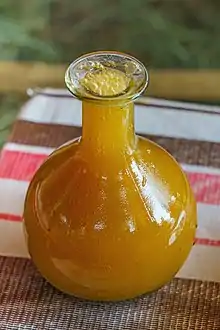
.jpg.webp)

